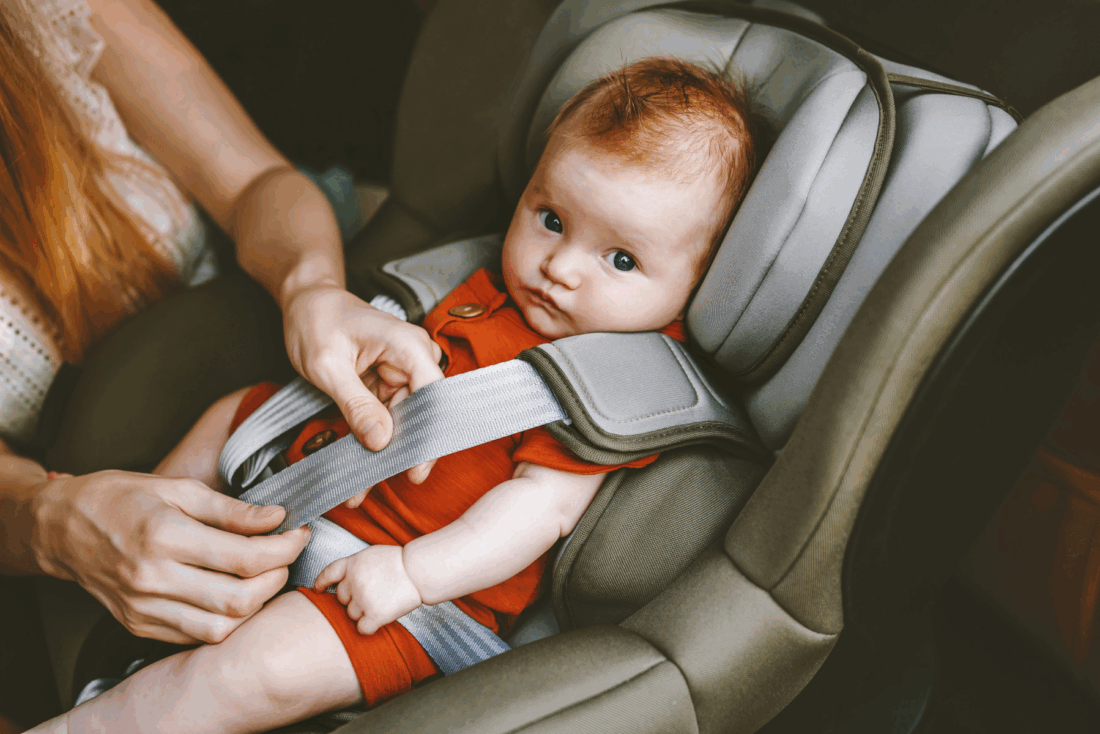When it comes to protecting your children on the road, few tools are as critical as a properly installed car seat. According to the National Highway Traffic Safety Administration (NHTSA), car seats reduce the risk of fatal injury by 71% for infants and 54% for toddlers in passenger cars.

But using a car seat isn’t enough—it has to be the right seat, installed correctly, and used consistently. Unfortunately, many parents don’t realize they’re making dangerous mistakes until it’s too late.
In this guide, we’ll break down key car seat safety tips every parent should know, and what steps to take if your child is ever injured in a car accident.
1. Choose the Right Seat for Your Child’s Age and Size
There are four main types of car seats, and each stage depends on your child’s age, height, and weight:
- Rear-facing car seats (birth to age 2–4): Safest for infants and toddlers. Use until they reach the max weight or height limit.
- Forward-facing car seats (ages 2–7): Includes a harness. Use until your child outgrows the seat’s size limits.
- Booster seats (ages 5–12): Used with a seatbelt until the child is big enough to use a seatbelt alone.
- Seatbelts (typically 4’9” and up): Children should remain in the back seat until at least age 13.
Always follow the manufacturer’s guidelines and check state laws for specific requirements.
2. Common Car Seat Mistakes to Avoid
Even when parents buy the right seat, usage errors can put children at risk. Some of the most common mistakes include:
- Using a forward-facing seat too early
- Installing the seat too loosely
- Harness straps positioned too high or too loose
- Using aftermarket accessories not approved by the manufacturer
- Letting a child ride in a booster before they’re ready
Pro tip: Many fire stations, hospitals, and safety organizations offer free car seat checks to ensure correct installation.
3. Know the Law—And Your Rights
Most states have strict car seat laws—and for good reason. But even when you follow all the rules, another driver’s negligence can cause a crash and injure your child.
If that happens, it’s important to understand your legal rights. You may be entitled to compensation for:
- Medical bills
- Emotional trauma
- Ongoing therapy or care
- Pain and suffering
A crash involving a child can be especially complex. An experienced personal injury attorney can help you understand your options, hold the at-fault party accountable, and ensure your family gets the support you need to recover.
In more serious cases, it may be wise to consult a car accident lawyer who is experienced in navigating the legal aftermath of family-involved collisions.
4. After a Crash: When to Replace a Car Seat
Did you know you may need to replace your car seat even if your child wasn’t hurt in the crash?
The NHTSA recommends replacing a car seat after any moderate or severe crash—even if there’s no visible damage. This helps ensure the seat can still protect your child in future accidents.
Some manufacturers also offer accident replacement policies, so check your warranty and keep documentation after a crash.
Final Thoughts: Safety Is a Daily Habit
As a parent, you can’t control every driver on the road—but you can control how well your child is protected in the car. Choosing the right seat, installing it properly, and knowing your legal rights after a crash are key parts of that protection.



